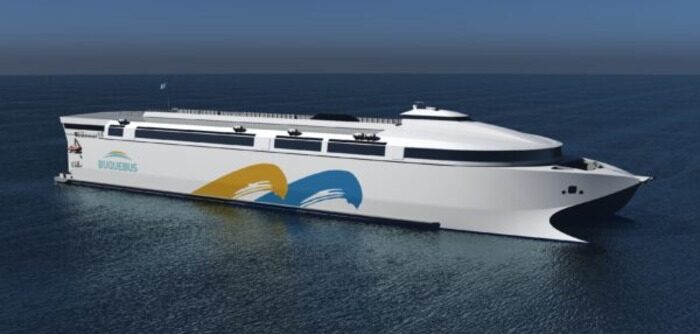Australian shipbuilder Incat Tasmania is in discussions to deliver what it claims will be the world’s first large, lightweight, zero-emissions ferry.
The 130m lightweight ferry, originally intended to be powered by LNG, will carry 2,100 passengers and 226 vehicles for Incat’s long-term South American customer, Buquebus. Following consultation with the customer, Incat has been asked to investigate the possibility of replacing the LNG powerplant with a battery-electric solution.
The ship is to be delivered in 2025. If it is fitted with a battery-electric propulsion system, it will be the world’s largest, lightweight, zero-emissions ferry operating on any route in the world.
“The customer wants this to happen, Incat wants this to happen, and while there are matters to be finalized, I am extremely confident that Incat can deliver this groundbreaking ship,” said Incat Group chairman and founder Robert Clifford. “In my experience, unless we see something come in from left field, this is a done deal.
“Obviously, there needs to be sufficient energy supply in the ports that the ship would visit, but we understand that this is progressing positively. The batteries and electric motors are being worked through with our suppliers to ensure they can deliver the technology required in the timeframe we need them.
“Zero-emissions shipping is the future and Incat, based in Tasmania – one of the few places on the planet that has already delivered net zero – is now poised to revolutionize the world’s shipping fleet by delivering the world’s first zero-emissions, lightweight ship.”
Former Tasmanian Premier and Incat’s strategic adviser Peter Gutwein added, “Delivering the world’s first large battery-electric ferry for Buquebus would lead to exponential growth in the international market for large lightweight electric ships.
“The world wants large, lightweight zero-emission ships and we are already scaling up our workforce and production facility in readiness for what will be a significant expansion.
“It will be a win-win for the environment and for investment in long-term skilled jobs in Tasmania.”



